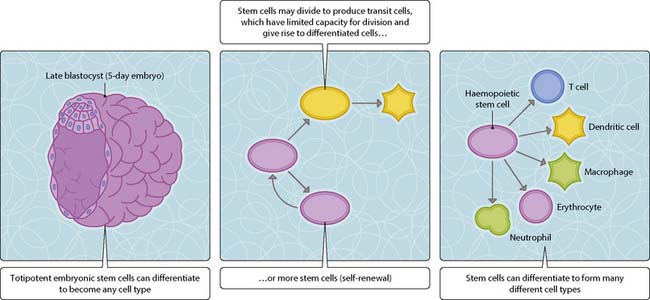50 Stem cells
Differentiation
Although all new cells have the complete genome of the organism and, therefore, the genetic information necessary to differentiate to become any of the specialized cells of the body, most are already committed to a limited number of possible phenotypes. This has important implications for the processes of tissue renewal and repair. All humans develop from a single cell, the fertilized egg. Early embryos, called blastocysts, have an outer layer of protective support cells that encases a group of cells called totipotent embryonic stem cells (ESCs; Fig. 3.50.1). These cells, which are undifferentiated, have the potential to develop into any cell of the body. As the embryo develops further, these cells appear to become committed to one of three paths: ectoderm (giving rise to skin and neural tissue), mesoderm (blood, muscle and connective tissue) and endoderm (respiratory and digestive tissue). Differentiation into specialized, adult-type cells requires selective gene expression and exposure to specific hormonal and environmental cues.
Stay updated, free articles. Join our Telegram channel

Full access? Get Clinical Tree






